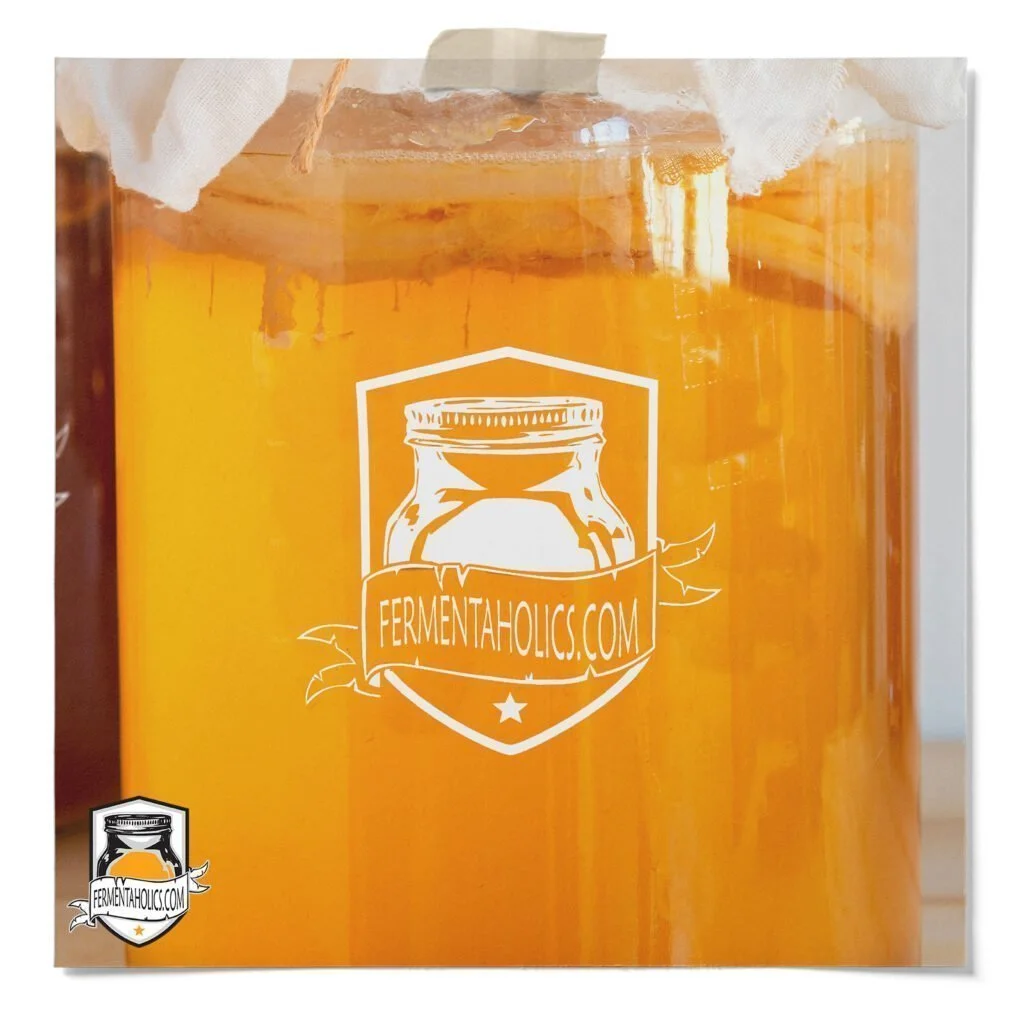
This liquid kombucha culture is usually taken from a previous batch of kombucha and is then used to kick start a new batch of kombucha, hence the name starter tea. Starter tea is a phrase that differentiates matured kombucha from freshly inculcated, particularly referencing the matured kombucha that is used as the inoculum for a new batch of kombucha.
Where do you get it? If you’ve gotten a culture from a friend who brews, odds are they passed it along with about a cup or so of liquid–this is your starter tea. Don’t know anyone that brews? You can order our kombucha scoby, which will come with a scoby pellicle and 12 ounces of mature kombucha starter tea, ready to use. For each and every batch after that, reserve 12 ounces (if brewing 1 gallon) of kombucha from the previous batch to use as your starter for the next.
Matured kombucha, or starter tea, has had time to develop beneficial acids and many generations of microbes. It contains low sugar and measures in at a low pH, between 2.5-3.5, depending on its age.
Starter tea plays two vital roles in the kombucha brewing process. Over the years, the pellicle that forms on the surface of the brew have been referred to as the SCOBY (symbiotic colony of bacteria and yeast). It’s true that deeply embedded in every fiber of that pellicle is all the yeast and bacteria that created the cellulose pancake; however, you don’t technically need the pellicle to begin brewing kombucha. The pellicle does contain a high dose of bacteria and yeast; the starter tea alone, when the proper amounts are used, will also contain all the necessary microbes to get the job done. I think we all get a little emotionally attached to the little pellicles, though, as it gives us a visual means of communication with our millions of little friends.
Need a little more clarification on the pellicle? See our post here on What is a SCOBY for some more details.
So, one crucial role that starter tea plays is inoculation! It introduces the yeast and bacteria into a fresh batch of sweet tea to begin the fermentation. You really could refer to the starter tea as a SCOBY and be 100% correct.
The other equally as important role of starter tea is to lower the pH of the starting kombucha brew. If you measure the pH of your plain sweetened black tea before you add kombucha starter tea, it usually clocks in around 6.0-7 on the pH scale(this can vary depending on the pH of your water source, tea brand, and length of brew time. Full-strength tea is more acidic, but remember, for kombucha, we brew a very weak brew compared to that of a cup of tea, so the pH stays closer to that of plain water. At that level, the microbial battle is a free-for-all that could wind up in a ton of different ways–the most likely being a moldy batch of booch.
If a SCOBY forms during the second fermentation, you can filter it out when serving, eat it, save it, or toss it. It’s up to you; let’s go over each.
Find all kombucha brewing measurements and ratios here – Kombucha Tea Brewing Ratios
No good rule goes without exceptions, however. If you are brewing in a colder environment, you can use a larger ratio of starter tea to help jump-start the brewing process when you’ve got chilly and lazy yeast on your hands.
Or, if you choose to brew using the continuous brewing method, your ratio of starter tea is much larger. When you brew with the continuous brewing method, you are only replacing the tea that you pour out to drink or bottle, meaning the ratio of starter could technically be like 75% or even higher.
Moral of the story: Kombucha starter tea is a big deal, so don’t skimp 🙂
